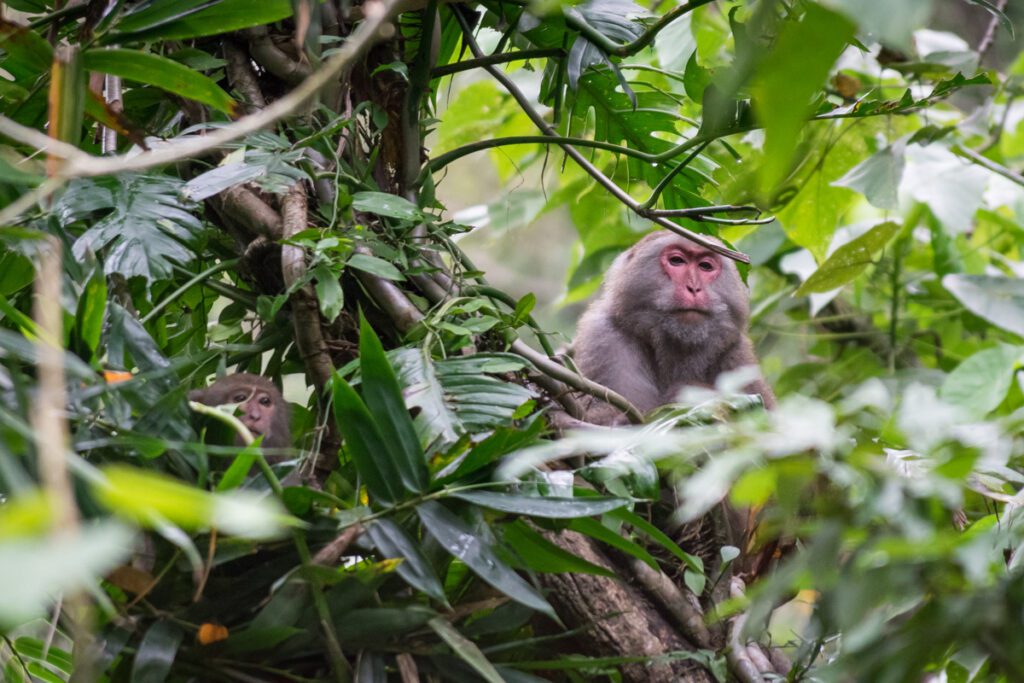Located in eastern Taiwan, Taroko National Park is renowned for its breathtaking landscapes, rich cultural heritage, and diverse ecosystems. The park encompasses parts of Hualien County, Taichung City, and Nantou County. Its most iconic feature is the Taroko Gorge, an 18-kilometer-long canyon carved by the Liwu River through marble and granite formations.
The park’s dramatic topography results from the collision of the Philippine and Eurasian tectonic plates, a process that began around four million years ago. The stunning topography and diverse ecosystems make Taroko National Park one of the best nature reserves in Taiwan. Here’s our comprehensive guide to Taroko National Park;
Please Download Our Mobile App here.
Overview of Taroko National Park
Nestled in the rugged mountains of eastern Taiwan, Taroko National Park lies northeast of the island’s center and southeast of the bustling capital, Taipei. Encompassing 360 square miles (920 sq km), the park is a dramatic landscape of marble cliffs, lush forest, and winding rivers. Its namesake feature, the breathtaking Taroko Gorge, was carved by the persistent force of the Liwu River slicing through the marble rock.
This geological masterpiece draws nature lovers, hikers, and photographers from all over the world. The park blends natural grandeur with cultural significance, offering a mix of adventure and reflection. Highlights include the vertigo-inducing Zhuilu Cliff Trail and its famed suspension bridge, the striking Swallow Grotto, and the coastal drama of the Qingshui Cliffs.
Waterfalls like Baiyang, Changchun, Lushui, and Yindai cascade throughout the park, creating tranquil respites along the hiking paths. The Eternal Spring Shrine offers a serene and poignant tribute to those who lost their lives building the Central Cross-Island Highway. The nearby Changuang Temple invites quiet contemplation amid sweeping mountain views.
Wildlife in Taroko National Park

The park is home to 46 species of large mammals, including some of Taiwan’s most iconic and elusive animals. Deep in its forested slopes, you’ll find the endangered Formosan black bear while more commonly seen are the grey-furred Formosan macaques and the reddish-brown Formosan sambar deer.
Other notable mammals include the nimble Formosan serow, a goat-antelope hybrid, the wild boar, and even the newly documented Mustela formosana. Taroko also teems with avian life—over 150 bird species have been recorded. These include the brilliantly plumed Formosan blue magpie, the ground-dwelling white-throated hill partridge, and the melodious Formosan whistling thrush.
Endemic species like the Steere’s liocichla, white-eared sibia, and the striking Swinhoe’s and Mikado pheasants make the park a birdwatcher’s paradise. Beyond mammals and birds, Taroko’s biodiversity extends to over 300 species of butterflies, countless reptiles and amphibians. There’s also a rich aquatic population in its rivers and streams that includes native fish, shrimp, crabs, and frogs.
The park is also notable for its high number of endemic species—six mammals, three amphibians, and three reptiles are found nowhere else in the world. Complementing this fauna is a vibrant plant world, with around 1,100 vascular plant species, including 57 considered rare across Taiwan.
Best Time to Visit Taroko National Park
The most enjoyable time to explore Taroko National Park is between October and April. During these months, the climate is refreshingly cool and dry—perfect for outdoor adventures like hiking through marble gorges or soaking in the dramatic views from cliffside trails.
These months also offer the most comfortable conditions for sightseeing, with crisp air and clear skies enhancing the park’s already stunning scenery. Travelers hoping to avoid heavy foot traffic should steer clear of long weekends and the second half of the Lunar New Year holiday, as these periods tend to draw larger crowds.
Getting to Taroko National Park

Traveling from Taipei to Taroko National Park is relatively straightforward and offers several convenient options. Most visitors begin by taking a train to either Hualien or Xincheng Station—the latter being closer to the park entrance. High-speed options like the Taroko or Puyouma express trains can get you there in about 2 to 3 hours, while the more economical Chu-Kuang express takes roughly 4 to 4.5 hours.
Upon arrival, travelers can continue into the park via public buses such as Hualien Bus 1132. They make regular stops at key points within the park. For added flexibility, taxis are available and offer a comfortable, direct route to your chosen destination. Alternatively, joining a guided tour is a stress-free way to experience Taroko’s major highlights without worrying about logistics.
Other Activities in Taroko National Park
The iconic Eternal Spring Shrine is the highlight of the national park. Visitors can also delve deeper into the region’s heritage at spiritual landmarks like Changuang Temple. The park is also known for its stunning architectural works such as the Liufang and Cimu Bridges (the Motherly Devotion Bridge).
The Tunnel of Nine Turns—reopened in 2017—offers an immersive experience through winding corridors carved into the gorge walls. Hikers are spoiled for choice, with trails like the Shakadang Trail, known as the Mysterious Valley Trail, meandering through lush jungle terrain over a span of 4.1 km.
The Baiyang Trail impresses with tunnels and a unique water curtain formed by a waterfall pouring through one of the cave passages. For thrill-seekers, the Swallow Grotto Trail traces the Liwu River along high cliffs. This path rewards visitors with dizzying views and intriguing formations like the Chieftain’s Profile Rock, a naturally sculpted outcrop resembling a tribal leader’s face.
Park Fees in Taroko National Park

Entry to Taroko National Park is free for all visitors. However, there is a fee for accessing the Zhuilu Old Road, a popular and scenic trail within the park. The full-price ticket for this trail costs NT$200 ($6.50). Discounted tickets are available for NT$100 ($3.25), applicable to students, children aged 6-12, and adults over the age of 65. Also, children under 6, mountain rescue personnel, and individuals with disabilities enter free of charge.
FAQs
What is special about Taroko National Park?
Taroko National Park is renowned for its awe-inspiring landscapes, characterized by towering mountains and dramatic gorges. Many of the park’s peaks rise above 3,000 meters, offering striking views of the surrounding terrain. The park’s centerpiece, the stunning Taroko Gorge, is a marvel of nature, where the Liwu River has carved deep canyons through marble rock formations.
What is the meaning of Taroko?
The word “Taroko” is derived from the Truku language, where it means “magnificent” or “beautiful.” This fitting name reflects the awe-inspiring landscapes of Taroko National Park, shaped by the powerful forces of nature. The Liwu River, over countless millennia, carved through the rock, creating the stunning Taroko Gorge that is one of the park’s most iconic features.
Conclusion
Taroko National Park is a true natural wonder that showcases the stunning geological, ecological, and cultural diversity of Taiwan. From the dramatic marble cliffs of Taroko Gorge to the rich wildlife and indigenous heritage, the park offers an unforgettable experience for nature lovers and adventure seekers.




